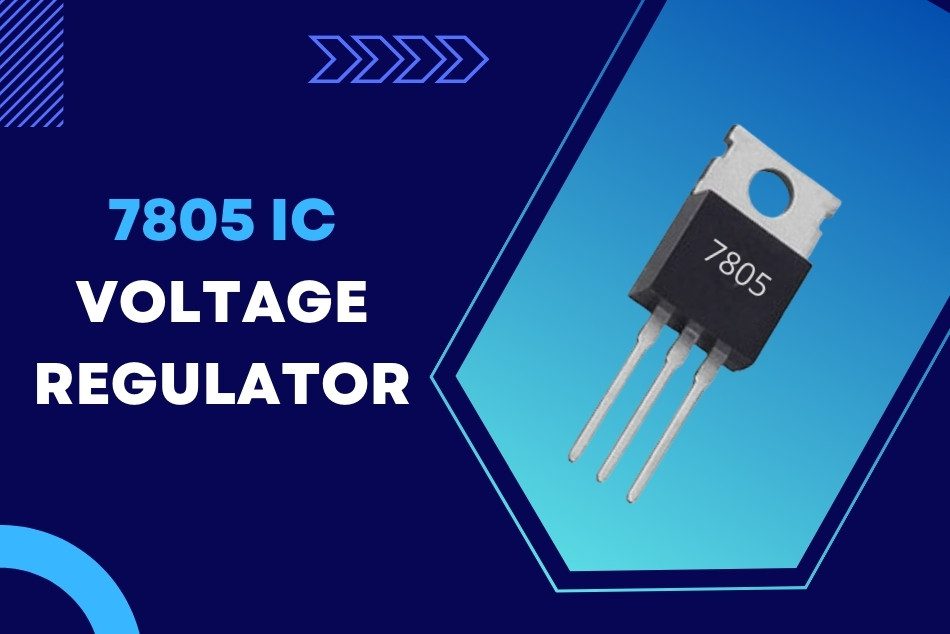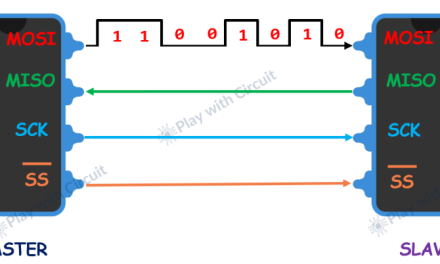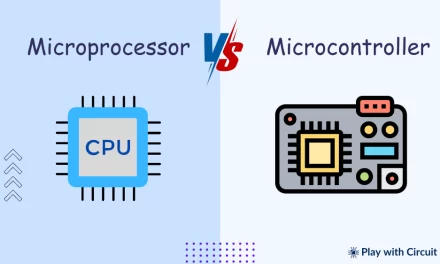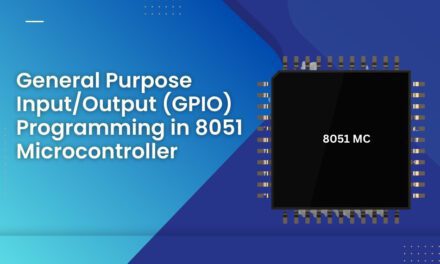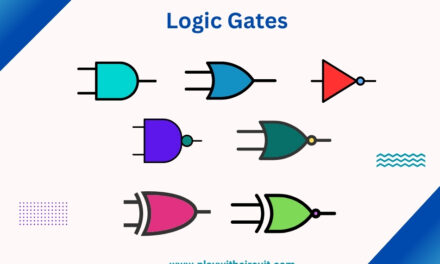In electronic circuits, voltage regulator is one of the most commonly used components. It provides regulated voltage (without fluctuations & noise) which is very important for the smooth functioning of various digital electronic devices.
Here, we will learn about 7805 IC which is the most widely used IC based voltage regulator available in the market.
What is the 7805 Voltage Regulator?
7805 IC is the member of 78XX family of voltage regulators. It is a three terminal linear voltage regulator with a fixed output voltage of 5V that remains constant for any changes in an input voltage or load conditions. It acts as a buffer for protecting components from damages.
Most of the TTL IC’s work on 5V logic and hence we need a mechanism to provide a constant 5V supply.
7805 IC Pin Diagram
805 is a three terminal voltage regulator IC with the three pins being 1. INPUT, 2. GROUND and 3. OUTPUT.

The pin description of the 7805 is described in the table given below :
| Pin No. | Pin Function | Description |
|---|---|---|
| INPUT | Input voltage (7 V- 35 V) | In this pin, positive unregulated voltage is given. |
| GROUND | Ground (0 V) | This pin is connected to ground. Input and output are common to it. |
| OUTPUT | Regulated output; 5V (4.8V-5.2V) | The regulated 5V output is taken out at this pin. |
Basic Circuit of 7805
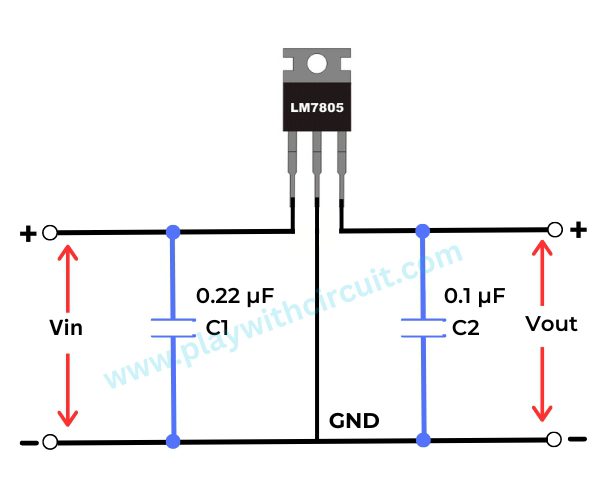
The circuit diagram of the 7805 voltage regulator is shown above which is used to provide a regulated output voltage like 5V. This circuit mainly includes a few essential components.
-
Input Voltage (Vin): The input voltage is connected to the input pin of the 7805 IC. It should be higher than the desired output voltage of 5 volts.
-
Input Capacitor (C1): A bypass capacitor of 0.33μF is connected between the input pin and ground. It helps to smooth out any input voltage ripples and filter noise.
-
Ground (GND): The ground pin of the 7805 IC is connected to the ground of the circuit.
-
Output Voltage (Vout): The regulated output voltage of 5 volts is obtained from the output pin of the 7805 IC. The output voltage is connected to the positive terminal of the load or the circuit.
-
Output Capacitor (C2): A bypass capacitor of 0.1μF is connected between the output pin and ground. This capacitor helps to stabilize the output voltage and reduce any output voltage ripples.
Heat Dissipation in 7805 IC
One important consideration when using the 7805 IC is heat dissipation, as it operates by dissipating excess voltage as heat. When the input voltage is higher than the desired output voltage, the regulator needs to dissipate the excess voltage as heat to provide a stable 5V output. The amount of heat generated depends on the input voltage and the current flowing through the regulator.
The heat generated by 7805 IC can be calculated by the formula given below:
Heat generated = (input voltage – 5) x output current
Let’s say if input voltage is 10 V and current is 1 A.
Then, power dissipated as Heat = (10 – 5) x1 = 5 W.
As we can see, higher the input voltage the more heat is generated. Similarly, higher the output current more the heat is generated. Thus, in both cases 7805 will be less efficient. So, we should not use higher input voltages otherwise we have to use appropriate heatsink to disperse this heat. A heat sink is a device that helps dissipate heat more efficiently. By attaching a heat sink to the 7805, you can enhance its thermal performance and prevent overheating.
Features of 7805 IC
The features and specifications of the 7805 voltage regulator include the following.
- Its input voltage ranges from 7 to 35 volts. The input voltage should always be higher than the desired output voltage of 5 volts.
- The maximum output current that the 7805 can supply is 1A.
- It has thermal overload protection internally.
- It has a high power dissipation capacity.
- It is Available in KTE, TO-220, SOT-223, TO-92, and TO-3 packages.
Advantages of 7805 IC
- The advantages of the 7805 voltage regulator IC include the following.
- The 7805 IC provides a stable and regulated 5 volts DC output, ensuring consistent power supply to connected electronic components.
- It is straightforward to implement in circuits, requiring minimal external components for operation.
- It incorporates a thermal shutdown feature that protects the IC from overheating, enhancing its safety and durability.
- 7805 IC is reliable, efficient, and versatile.
- Its transient response is fast.
- It is available in various package types, allowing flexibility in circuit design and integration.
- It is a widely available component, making it cost-effective for many applications.
- It maintains a constant output voltage even when the load connected to it varies.
- It supplies a maximum output current of 1 ampere (1A), making it suitable for powering a range of electronic devices.
Applications of 7805 IC
- 7805 is used as Fixed Output Regulators.
- 7805 is used as Current Regulators (very inefficient no longer used).
- 7805 is used in Power Supplies.
- 7805 IC is used as Adjustable DC Voltage Regulator
- 7805 is used in Regulated Dual-Supply
7805 IC as Fixed Voltage Regulator

In the above figure, there is one 7805 IC along with two capacitors which are required to suppress transient response.
Here, input voltage is 12V and output voltage is approximately 5V.
If the input voltage decreases/increases, the voltage regulator adjusts itself so that output voltage remains 5V approx.
Power Supply
Power supply, as the name suggests, is a special circuit which provides electrical power to an instrument. Here in this article we will learn about AC to DC Power supply in which 220V alternating voltage is given to the circuit and we get DC voltage at output.
These types of power supplies are mainly of two types SMPS i.e, Switch Mode Power Supply and Linear Power Supply.
Here, we will discuss only Linear Power Supply.
Linear Power Supply
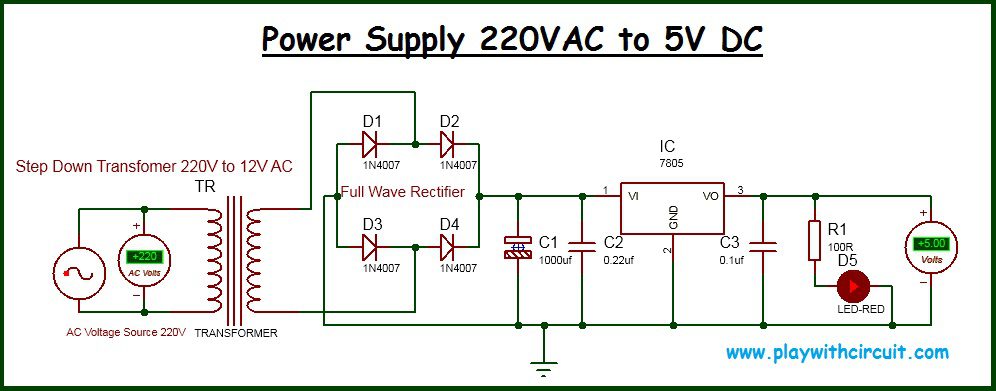
Working
Firstly 220V AC is converted to 12V AC using step down transformer.
Now, the full wave bridge rectifier is used to change sinusoidal waves into pulsating DC.
Now, the 1000 µF Capacitor is used to convert pulsating DC into DC (with ripples).
Now, 7805 IC along with its passive components capacitor C1 and C2 convert this DC(with ripples) into constant 5V DC.
FAQ’S
What is 7805 Voltage Regulator IC?
The 7805 is a popular linear voltage regulator IC that provides a regulated 5-volt output voltage. It is widely used in electronic circuits to convert higher input voltages into a stable 5-volt output to provide a reliable power supply for various components and devices.
What is the minimum voltage for 7805 voltage regulator?
The minimum input voltage required for the 7805 voltage regulator is typically around 7 volts.
What are the applications of 7805?
7805 IC has a wide range of applications:
- Adjustable DC Voltage Regulator
- Fixed-Output Regulator
- Current Regulator
- Regulated Dual-Supply
- Microcontrollers and digital ICs
- Sensors and modules
- Audio circuits
What are the advantages of 7805 regulator?
The 7805 voltage regulator offers several advantages:
- It is reliable, very efficient, and versatile.
- It has built-in protection against short circuit and overvoltage.
- Its transient response is fast.
- It doesn’t require any additional component to manage its output voltage.
- It consumes low power.

